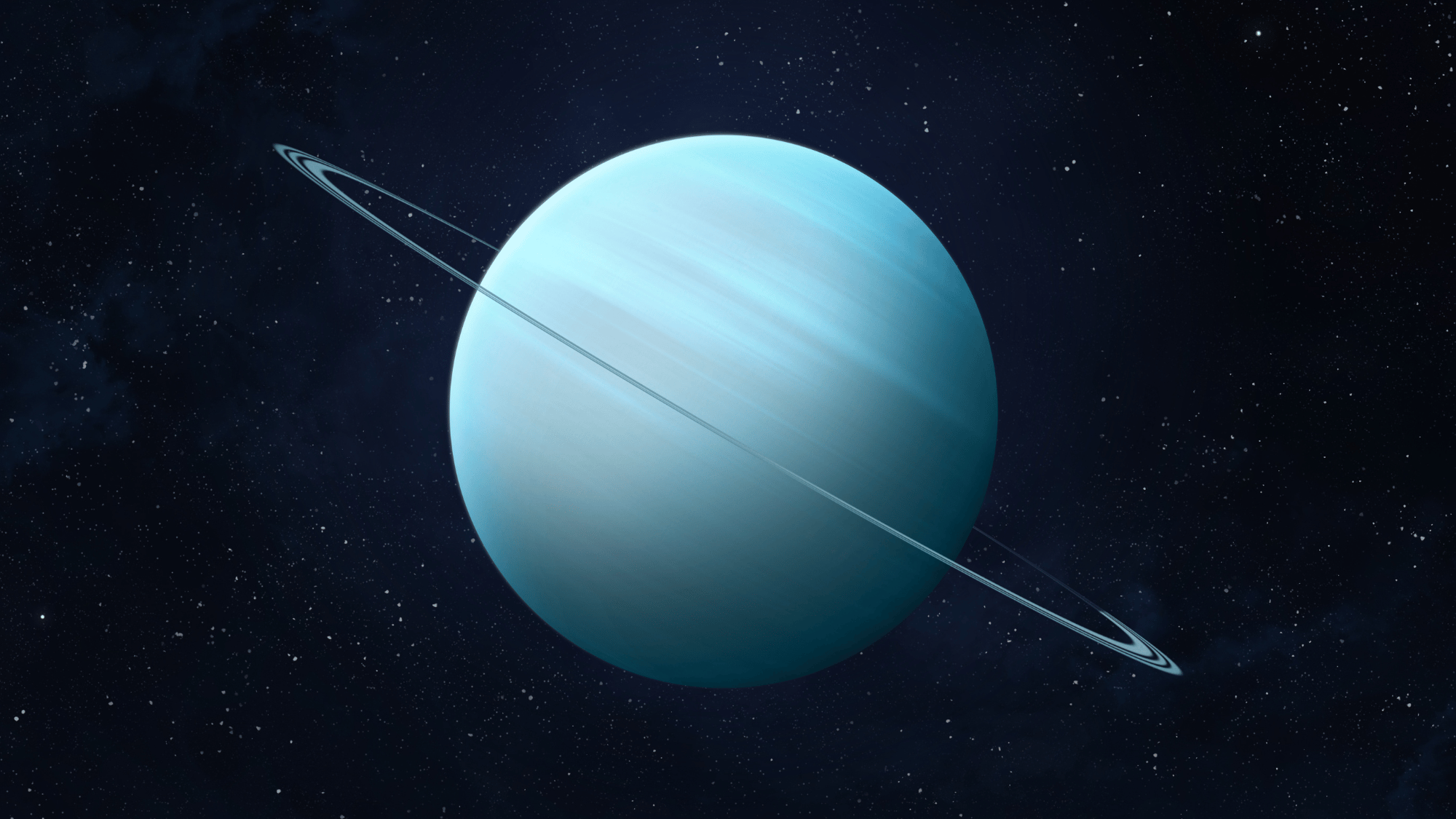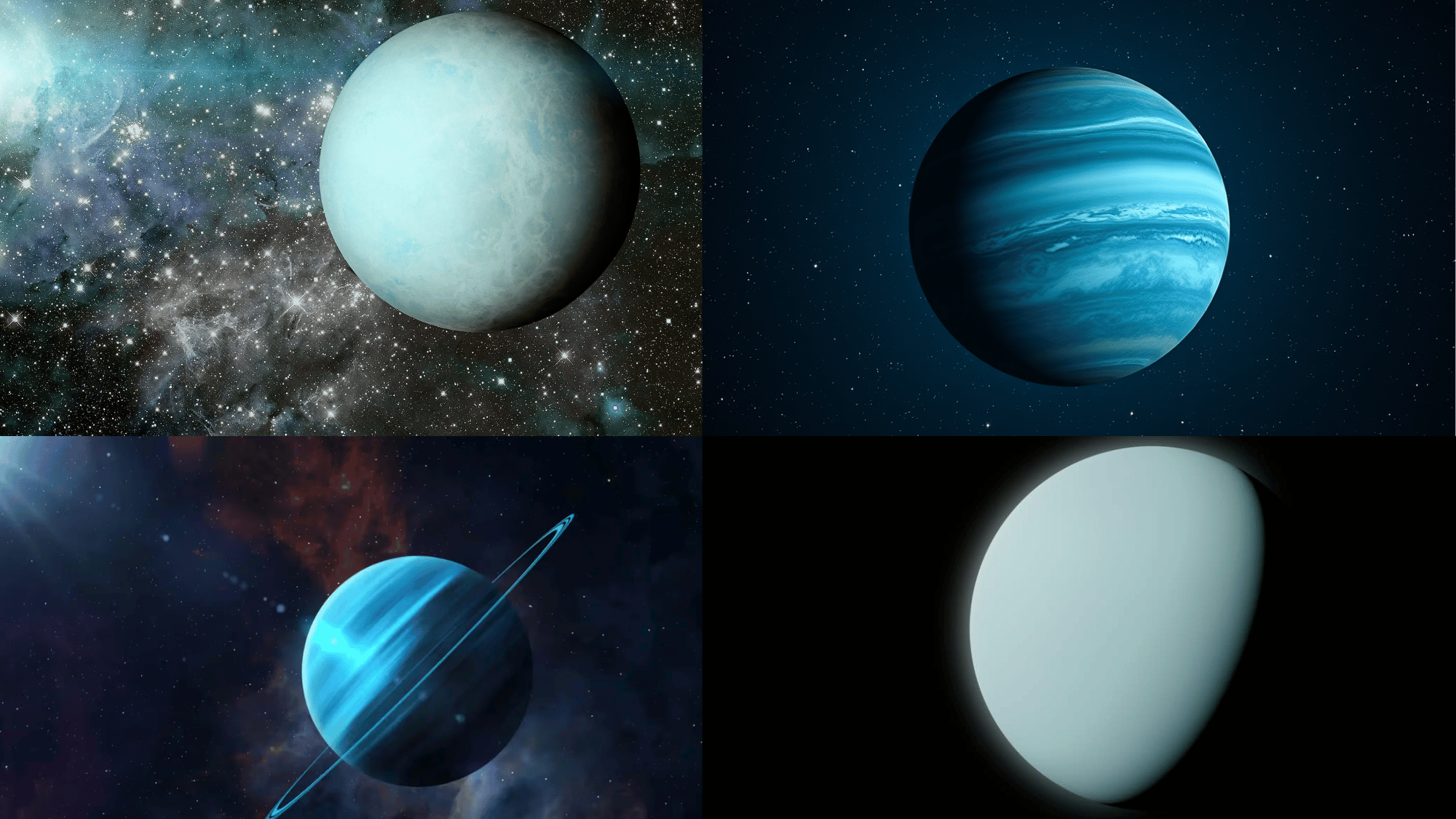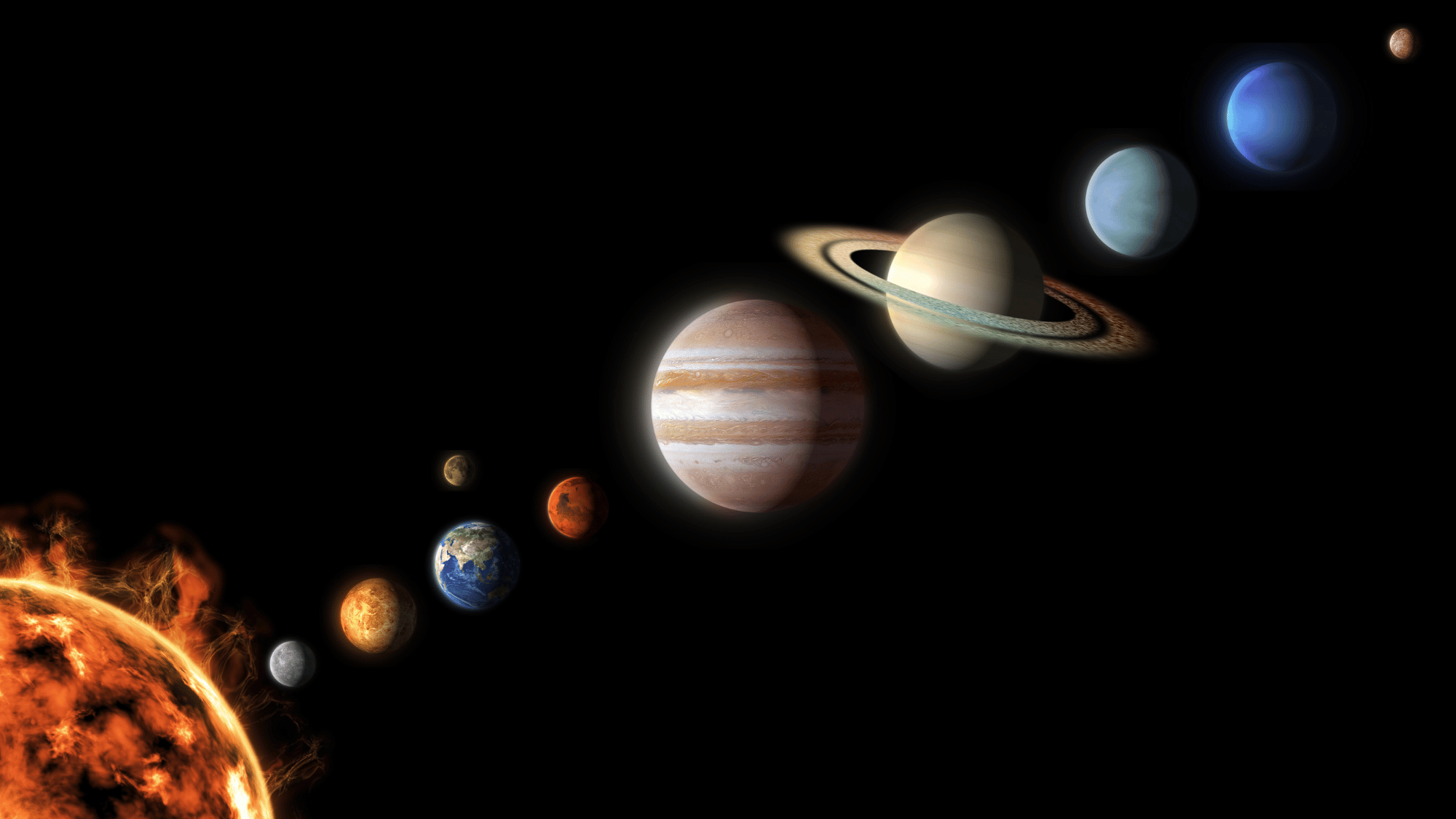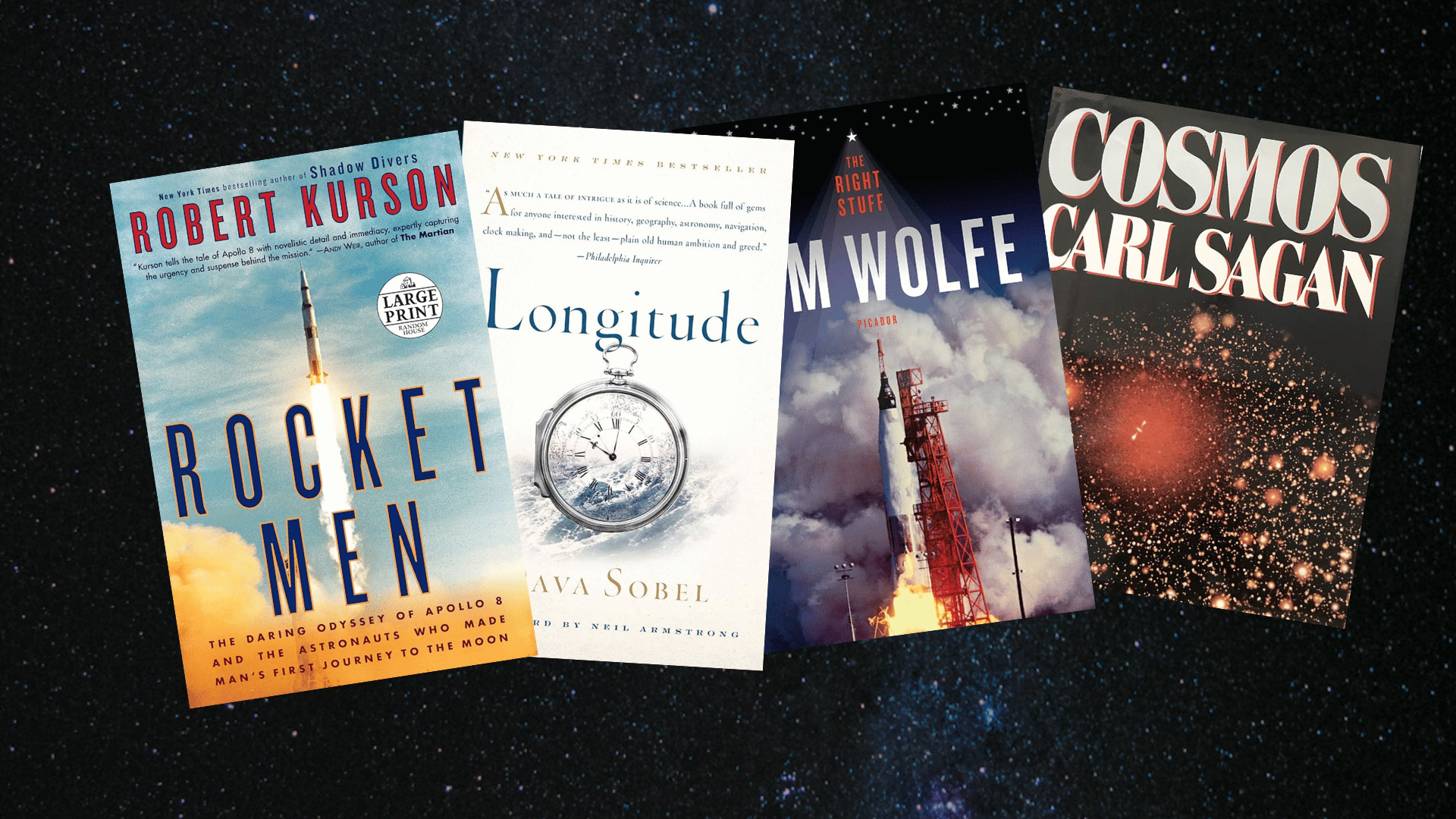There’s something captivating about the night sky, endless stars twinkling above, each hiding its own story.
Among them lies Uranus, a planet that often sparks curiosity but remains unseen by most people.
Unlike the bright, easily visible planets, Uranus is subtle and mysterious, waiting to be discovered by those who know where to look.
Many skywatchers have heard of it, yet few realize it’s sometimes visible without any special equipment.
The question is: can you really spot Uranus with the naked eye? Let’s learn what makes this distant planet both elusive and exciting for anyone who loves stargazing.
How Bright is Uranus Compared to Other Planets?
Uranus is not nearly as bright as the planets that most people notice first in the night sky. Venus, Jupiter, and even Saturn can shine strongly enough to stand out right away.
Uranus, however, is much dimmer. It has an average magnitude of about +5.7 to +6. This level is very close to the faintest objects most people can see without help.
In contrast, Venus can reach a magnitude of –4.9, which makes it the brightest planet in the sky. This difference explains why Uranus is less noticeable.
Since Uranus is so dim, light pollution makes it nearly impossible to see, and even under darker skies, it can be missed if you do not know exactly where to look
That is why sky maps or apps are often used to locate Uranus before attempting to view it with the naked eye.
Can you see Uranus with the Naked Eye?

It is possible to see Uranus with the naked eye, but the conditions must be just right.
Since the planet is faint, the best chance to find it is in a rural area with very dark skies.
The Moon also affects visibility: when the Moon is full or bright, its light washes out dim objects, so Uranus is easier to look for when the Moon is less bright or has set.
Weather also plays a role, as clouds, haze, or humidity can block faint planets. Good eyesight helps because Uranus sits at the very limit of what the human eye can detect.
Even when all these conditions are met, Uranus does not appear as a detailed planet.
To the unaided eye, it looks like a tiny star, with no visible color or features. This is why many skywatchers use binoculars or telescopes for confirmation once they believe they have located it.
When and Where to Look for Uranus

Image Source: NASA Science
Spotting Uranus can be a rewarding challenge for stargazers. The planet is faint but visible to the naked eye under the right conditions. Knowing the best time, direction, and weather for viewing makes the experience much easier.
| Aspect | Details |
|---|---|
| Best Time to View | During opposition, when Earth passes between Uranus and the Sun, usually in October or November. |
| Visibility | Brightest and visible all night long during opposition. Rises in the east at sunset and sets in the west at sunrise. |
| Typical Location | Found in the constellations Aries or Pisces, and sometimes near Cetus. |
| Appearance | Looks like a faint, bluish-green star to the naked eye. |
| Viewing Tools | Use star charts, sky maps, or astronomy apps to locate it accurately. |
| Ideal Weather | Clear, dry nights are best. Avoid observing during cloudy, hazy, or humid conditions. |
| Best Seasons | Autumn and winter offer clearer air for sharper viewing. |
| Moon Phase | Choose nights when the Moon is not full for better contrast. |
| Light Pollution | Observe from dark areas away from city lights to spot Uranus more easily. |
Tips to Improve Your Chances of Seeing Uranus
Spotting Uranus can be challenging, but the right techniques make it easier. These tips will help you improve your chances and recognize the planet more confidently.
- Practice identifying constellations: Learn to recognize Aries and Pisces, where Uranus is usually located, so you can narrow down the search area quickly.
- Bring printed star charts: Electronics can reduce night vision, so a paper chart with a dim red flashlight preserves eyesight while locating Uranus.
- Use averted vision: Instead of looking straight at Uranus, glance slightly to the side; this uses more sensitive parts of your eyes and makes faint objects easier to detect
- Compare with nearby stars: Uranus does not twinkle like stars do, so spotting a steady point of light in its location can confirm you’ve found it.
- Check altitude and timing: Uranus is easier to see when it is high above the horizon, since low angles add more atmosphere and distortion.
- Join a local astronomy club: Experienced stargazers can point out Uranus directly, which makes it easier to learn how to spot it on your own later.
How to Take Photos of Uranus if Spotted
Photographing Uranus is challenging due to its faintness, but it can be accomplished with the right setup.
A DSLR or mirrorless camera with manual settings gives the best results. Always place the camera on a tripod to avoid movement and keep the image steady.
Use a telephoto lens to zoom in as much as possible, since Uranus will appear very small.
Adjust the camera to a high ISO to increase its sensitivity to light, and set the exposure time to between 10 and 30 seconds. Longer exposures may blur the planet as the Earth rotates.
To improve clarity, take several photos and use free software to stack them together. This method reduces noise and makes Uranus easier to identify in your images.
Conclusion
Uranus is distinctive among the planets for several reasons.
It rotates on its side, which causes its poles to experience decades of sunlight followed by decades of darkness. The planet also has a faint ring system and at least 29 known moons, each with distinct features.
Its features make it very difficult to spot with the naked eye. Under the right circumstances, however, it can still be observed without special equipment.
Knowing its location in the sky, preparing for clear conditions, and taking time to watch carefully are key steps.
For those who want to record the moment, simple camera techniques can capture its faint light. Spotting Uranus offers a rare chance to view one of the solar system’s more hidden worlds.


















